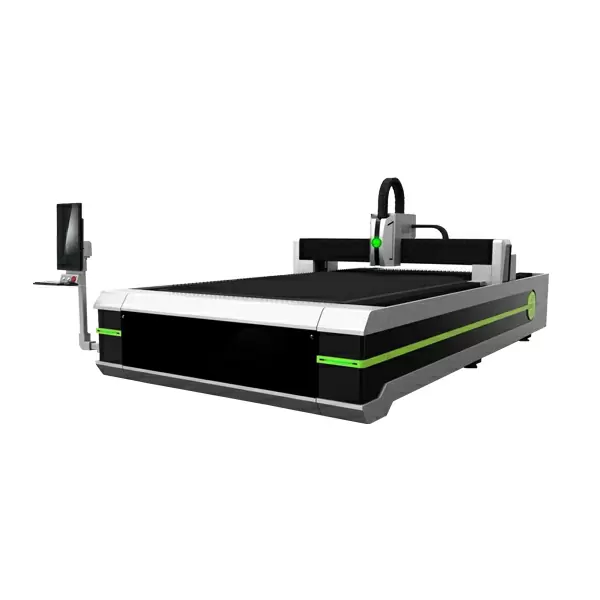The precision and accuracy of a 1kW laser cutter in terms of cutting dimensions depend on various factors, including the machine’s design, components, and the quality of its construction. Generally, a 1kW laser cutter can provide high precision and accuracy in cutting dimensions, but it’s important to note that there may be slight variations and tolerances based on the specific machine and its calibration.
Here are some considerations regarding the precision and accuracy of a 1kW laser cutter:
Cutting Tolerance: Laser cutters typically have a specified cutting tolerance, which refers to the allowable deviation from the intended cutting dimensions. The cutting tolerance can vary based on the machine’s capabilities and the material being cut. Common cutting tolerances for laser cutters range from a few hundredths to a few thousandths of an inch.
Material Thickness: The thickness of the material being cut can affect the precision and accuracy of the laser cutter. Thicker materials may have slightly larger tolerances compared to thinner ones due to factors like beam divergence and heat absorption.
Machine Calibration: Proper calibration of the laser cutter is crucial for achieving accurate cutting dimensions. Regular calibration and maintenance ensure that the machine’s components, such as mirrors, lenses, and focus, are aligned correctly and operating optimally.
Cutting Speed: The cutting speed chosen for a particular material can impact the precision and accuracy of the laser cutter. Higher cutting speeds may result in slightly reduced precision compared to slower speeds. Finding the right balance between speed and accuracy is important for achieving desired cutting dimensions.
Material Variations: Different materials may have different characteristics and properties, which can influence the precision of the laser cutting process. For example, certain materials may have a higher propensity for melting or warping, leading to potential deviations from the intended cutting dimensions.
Design Complexity: Intricate or complex designs may require finer levels of precision and may pose challenges for maintaining accuracy throughout the cutting process. The complexity and intricacy of the design can impact the achievable precision of the laser cutter.
It’s worth mentioning that for exceptionally high precision requirements, additional measures such as multiple passes, optimized cutting parameters, and post-processing techniques may be employed to further refine the cutting dimensions.
When considering the precision and accuracy of a 1kW laser cutter, it’s advisable to review the specifications provided by the manufacturer and consult with them directly for detailed information about the specific machine’s capabilities and performance.
What are some key factors to consider when choosing a 1kW laser cutter for specific applications?
When choosing a 1kW laser cutter for specific applications, it’s important to consider several key factors to ensure the machine meets your requirements. Here are some factors to consider:
Cutting Materials: Determine the type of materials you plan to cut with the laser cutter. Different laser cutters may be optimized for specific materials such as metals, plastics, 1kw laser cutter woods, or fabrics. Ensure that the laser cutter you choose is capable of cutting the materials you need for your specific application.
Cutting Thickness: Consider the maximum thickness of the materials you intend to cut. Laser cutters have limitations on the maximum thickness they can effectively cut. Ensure that the 1kW laser cutter you select can handle the thickness of the materials you’ll be working with.
Cutting Speed: Evaluate the required cutting speed for your application. The cutting speed can vary based on the material and thickness being cut. Consider the speed capabilities of the laser cutter and whether it aligns with your production needs.
Precision and Accuracy: Assess the required precision and accuracy for your specific application. Evaluate the machine’s cutting tolerance, which determines the allowable deviation from the intended dimensions. Consider the level of precision required for your work and ensure that the laser cutter can achieve it.
Work Area Size: Consider the size of the work area or the maximum dimensions of the materials that can be accommodated by the laser cutter. Ensure that the machine’s work area is sufficient for your application and can accommodate the size of the materials you’ll be working with.
Software and Control System: Evaluate the software and control system of the laser cutter. User-friendly software and control interfaces can enhance the ease of use, efficiency, and productivity of the machine. Consider the compatibility of the software with your design files and the user-friendliness of the control system.
Support and Service: Research the reputation and customer support provided by the manufacturer or supplier of the laser cutter. Ensure they offer reliable technical support, training, and after-sales service. Check for warranty terms and availability of spare parts.
Safety Features: Laser cutters can pose safety risks due to the high-power laser beams involved. Consider the safety features provided by the machine, such as interlocks, enclosure systems, and safety certifications. Ensure that the laser cutter meets relevant safety standards and regulations.
Budget: Determine your budget for the laser cutter, including the initial purchase cost, ongoing maintenance, and operational costs. Compare different models and brands to find a machine that offers the best value for your budget while meeting your requirements.
Future Expansion: Consider your future needs and scalability. If you anticipate expanding your operations or taking on more complex projects in the future, choose a laser cutter that can accommodate your future requirements.
By carefully considering these factors, you can select a 1kW laser cutter that aligns with your specific application needs, production requirements, and budget.
